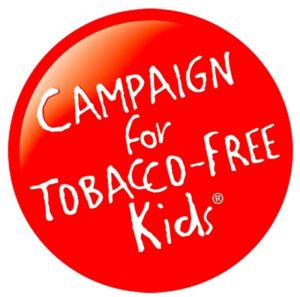 Florida ranks 14th nationwide in funding programs to prevent kids from smoking and help smokers quit, according to a report released today by a coalition of public health organizations. Florida is spending $67.8 million this year on tobacco prevention and cessation programs, which is just 34.9 percent of the $194.2 million recommended by the Centers for Disease Control and Prevention (CDC).
Florida ranks 14th nationwide in funding programs to prevent kids from smoking and help smokers quit, according to a report released today by a coalition of public health organizations. Florida is spending $67.8 million this year on tobacco prevention and cessation programs, which is just 34.9 percent of the $194.2 million recommended by the Centers for Disease Control and Prevention (CDC).
The report cites Florida as an example for other states because it has reduced high school smoking to a record-low 5.2 percent with a long-running and well-funded tobacco prevention program, called Tobacco Free Florida.
The report challenges states to do more to fight tobacco use – the nation’s No. 1 cause of preventable death – and help make the next generation tobacco-free. Despite Florida’s progress, 7,400 kids in the state become regular smokers each year. Tobacco use claims 32,300 Florida lives and costs the state over $8.6 billion in health care bills annually.
Other key findings in the report include:
- Florida will collect $1.58 billion in revenue this year from the 1998 state tobacco settlement and tobacco taxes and will spending 4.3 percent of the money on tobacco prevention programs.
- Tobacco companies spend over $560 million each year to market their deadly and addictive products in Florida – 8 times what the state spends on tobacco prevention. Nationwide, tobacco companies spend $9.1 billion a year on marketing – more than $1 million every hour.
Today’s report, titled “Broken Promises to Our Children: A State-by-State Look at the 1998 State Tobacco Settlement 18 Years Later,” was released by the Campaign for Tobacco-Free Kids, American Heart Association, American Cancer Society Cancer Action Network, American Lung Association, the Robert Wood Johnson Foundation, Americans for Nonsmokers’ Rights and Truth Initiative.
Florida has made tremendous progress in reducing youth smoking as a result of a constitutional amendment voters approved in 2006 that requires the state to spend 15 percent of its annual tobacco settlement revenue on tobacco prevention programs. The amendment led to the Tobacco Free Florida program, which includes media campaigns, community programs such as the youth-led Students Working Against Tobacco (SWAT) group and help for smokers trying to quit. Since 2006, Florida has cut its high school smoking rate by two-thirds, from 15.5 percent to 5.2 percent.
In addition to continued funding for tobacco prevention programs, health advocates are also calling on Florida leaders to increase the state’s cigarette tax, a proven way to reduce smoking, especially among kids.
“Florida’s amazing progress shows it is entirely within our reach to win the fight against tobacco and make the next generation tobacco-free,” said Matthew L. Myers, President of the Campaign for Tobacco-Free Kids. “Florida should keep doing everything it can to protect kids from tobacco.”
Nationwide, the U.S. has cut smoking rates to record lows – 15.1 percent among adults and 10.8 percent among high school students in 2015. If recent progress in reducing adult smoking continues, the U.S. could eliminate smoking by around 2035, according to a recent analysis in The New England Journal of Medicine.
By funding tobacco prevention and cessation programs at the CDC’s recommended levels, the states can help achieve this goal. But today’s report finds most states are falling far short:
- The states will collect $26.6 billion this year from the tobacco settlement and tobacco taxes, but will spend less than 2 percent of it ($491.6 million) on tobacco prevention programs.
- The $491.6 million that the states have budgeted for tobacco prevention is a small fraction of the $3.3 billion the CDC recommends. Only two states – North Dakota and Alaska – fund tobacco prevention programs at CDC-recommended levels.
- States with well-funded, sustained tobacco prevention programs have seen remarkable progress. Florida’s long-running programs have proven effective. And one study found that during the first 10 years of its tobacco prevention program, the state of Washington saved more than $5 in health care costs for every $1 spent on the program.
Each year in the United States, tobacco use kills more than 480,000 people and costs the nation at least $170 billion in health care expenses.
The report and state-specific information can be found at tfk.org/statereport.



[…] HERE for the Broken Promises report and HERE for the West Orlando News online article from which the quotes were […]